The first thing my mother asked when I told her that I've quit my job and plan to play poker for a living was, "That's gambling, right?" Since she is my mom, and trusts me, a simple "No, it's not. It is a skill game," was enough to put her mind at ease. But it takes a lot more than that to convince the skeptics.
This post will try and explain that about poker. It will be a detailed breakdown of why I chose this profession, how the daily life of a poker player looks like and if this is something you should get into. We’ll also talk about money.
There are three aims of this post:
For non-players, to give an inside look into what it entails to play poker for a living.
For amateurs thinking of taking the game seriously, what it takes to make the jump.
For poker professionals, an echo of thoughts, sharing struggles and victories.
Not all sections will be relevant to all the three groups; pick the ones you like. Here’s what follows:
For the ones who don’t know about the game, let’s start with a quick introduction.
WHAT IS POKER AND ITS LEGAL STATUS
Poker is a card-based skill game that involves an exchange of money. It has many variants and the most popular one is called Texas No-limit Hold'em, which is what I play. When most people say poker, this is what they mean. Other variations include Pot-Limit Omaha, Razz, Open Face Chinese etc.
The poker sites and rooms make money by charging rake. Rake is a percentage of every pot that is taken away - you can imagine it as a commission fees. It is usually anywhere from 2.5% - 5% of the pot with a cap on the total amount.
Most poker variations are played in two formats: Cash Games and Tournaments.
Cash games is where you show up with as much money you want (upto the maximum buy-in), and play with that. The stakes are fixed and are rarely increased as the game goes on.
In tournaments, everyone starts with the same amount of playing chips. As the game progresses, players are eliminated, and at the end a small percentage get the money, while the rest go empty handed. For example, in the last tournament I played, everyone paid Rs. 35k for the entry; there were 294 entries and top 30 people were paid. The guy who got eliminated at the 30th place got Rs. 61k, and the winner got Rs. 27 lacs.
The legal status of poker varies in different countries. In some places, online poker is banned, while live poker in casinos is allowed. For example, Las Vegas is the mecca of poker players but online poker is banned in the US save for a few states. Then there are places like London, where both live and online poker thrive.
In India, online poker is legal. Live poker is legal in casinos or poker rooms in select few places - Goa, Bangalore, Ahmedabad, Kolkata, Gangtok. Indian government treats poker under its gambling laws and a tax of flat 30% is applicable on your winnings.
IS POKER GAMBLING
I think I may not have told my mom the complete truth.
By definition, to gamble is to play games of chance for money. Technically, this makes poker gambling. But the real answer is neither as straightforward, nor is it binary.
Here's what I'll tell you - Poker is a skill based game with an element of luck. Given a long enough duration (which we poker players call long-term), the better player will win against a worse player. We’ll take an example to understand these concepts a bit more.
Let’s say you decide to flip a coin 100 times against a friend. You bet Rs. 10 on Heads every single time, and your friend bets the same amount on Tails. The betting odds are 1:1. This means that for every flip you win, your friend gives you Rs. 10 above your bet and vice versa.
If the coin is not rigged, you can expect to win exactly Rs. 0 after 100 flips. The probability of Heads on a coin flip is 50%; half the time you'll win 10 bucks per flip and lose 10 per flip the other half.
Your Winnings = (50%*100)*10
Your Losses = (50%*100)*(-10 )
This coin toss is a net break even game. Your expected value (EV) from this game is 0.
But here's the thing: Each coin toss is an individual event. The coin itself doesn't know what it showed last time - Heads or Tails. Each individual outcome is independent of the previous one. So it is also possible that 70 out of 100 flips (or even all 100 of them!) show Tails and you lose.
An unlucky day at the coin flip tournament. Hit by statistical probability.
The coin flip follows the laws of probability and statistics but it is not bound by the sample size. Just like we don’t expect the coin to show one Heads and the other Tails in 2 back to back flips, we shouldn’t expect it to show 50 each out of 100 times.
This is called variance - deviation from the norm, from our expected results.
In poker, just like a coin flip, each individual hand is different from the other and is independent of the previous outcome. In a coin flip, if we go long-term, by increasing the sample size to say a billion flips, the distribution should be equally weighted between Heads and Tails. Similarly, if two poker players play each other a billion hands, they can expect to get the same cards and situations equally.
Now the question arises: If both the sides can expect to have the best hand or the worst hand equal number of times, wouldn’t this be a break even game? No. This is where poker differs from a coin flip or any other purely probabilistic game.
You'll be dealt winning hands, and losing hands. The aim then is to extract the most value from your winning hands and minimise losses from your losing hands. This is called MinMax. Minimise losses - Maximise winnings.
Sidenote 1: Minimise losses doesn’t just mean losing the least money when you have a worse hand. It might also mean bluffing your opponent off of a better hand - in this case you are making money even when you have the losing hand.
How do we do that? This is what separates good players from bad. And where the skill comes in. So if an amateur wins against a better player 3 days in a row, it is variance. But, if this happens over a year, then our presumptions about who is a better player are wrong.
MY BEGINNINGS
Just like most people I know who play poker, I was introduced to the game in college. As broke college students, we didn't play for a lot of money - 100 bucks at max. The big winner would then take everyone out to the canteen for a treat. When we couldn’t borrow playing chips, we used matchsticks, or another deck of cards as play money. The setup was quite rudimentary.
The games continued when I started working, this time with proper chips. Stakes increased, nothing excessive, but reasonably higher than before. Poker nights became a thing. The biggest game I played was in the casinos in Goa. But it was just a handful of times as an amateur. And that was that.
Then in 2016, I got into it a lot more. I had money and time to spend. There were no obligations (house, car, family, loans) so I could afford an expensive hobby - and that's what it was at the time. I started playing a lot of home games and discovered Adda52.com - a poker site.
Here we'll take a quick leap across time to go back into the past - to a 13-14 year old me:
I was playing a lot of sports at the time and was competent at most. If two captains were choosing a team, I would be one of the early ones to get picked. And I entertained the dream of becoming a professional sportsperson. My father, who used to be a Table Tennis player/coach in his younger days, encouraged me to take up Snooker since I showed an inclination towards it. But, it was an expensive game; the hourly rates were prohibitively high for me. Around the same time, I had a serious injury which rendered me unable to play sports for a few years. So, the dream had to be put aside.
Coming to the recent past, during my college days, I picked up Snooker again (the hourly rates were ridiculously low). But it was just a hobby; a very time-consuming, entertaining and fulfilling hobby. It was too late to think about becoming a professional snooker player. To become world-class at any sport, you have to start young. Ronnie o' Sullivan, my snooker hero, and quite possibly the most talented snooker player in history, started playing at the age of 6. I couldn’t expect to start at 18 and think of becoming a good professional.
The point of these two stories is to tell you that playing a sport professionally would have been a dream come true for me. Cut back to the present and we see that I have discovered poker websites. A bulb lit up. What if I could do this for a living?
This was also at a time when I was thinking of quitting my job and finding a new location-independent income stream. I wrote about this in an earlier post (the one about my relocation to Goa). Playing online poker seemed to fit the bill. So, I decided to give it a shot. And by the time I quit my job in December 2015, I was on my path to make poker my profession.
THE JURNEY THUS FAR
The first few months of grinding (that's our term for playing poker as a job) were difficult. The most common fallacy among poker players, especially amateurs, is that they believe themselves to be much better than they actually are. I wasn't immune to it either.
When I started, I thought I knew what the game was, I had my moves, and felt that my opponents are doing stupid things and getting lucky. Of course it wasn't true, but in a state of mind clouded by the haze of bad results, it's difficult to recognize it in real time. And I lost a bit of money.
Losing money wasn't the problem. It was in a sense that I had limited savings to experiment this new income stream with. But the real problem was that I didn't know what I was doing wrong.
I had assumed that poker was a simple game. I was wrong. As I wasn’t studying enough, the complexities of the game caught me by surprise. It was the classic case of not knowing what you don’t know.
I started playing at 2/4, 3/6 and 5/10 - at a buy-in of 300, 500 and 750 respectively. The simple fact that I was playing such varied stakes goes to show how bad of a poker professional I was. This is not the way to play. You have to find a stake you are good at, beat that level, and then move to the next one.
After the first few months of losing (mostly online, some live home games for fun), I started spending more time on learning the game. I read articles, watched YouTube lessons, read books and discussed strategy with a friend who was a better player than me at the time.
Gradually, I leveled up to playing 5/10 exclusively (for a maximum buy-in of 1200) and started beating those games. Around the same time, a friend offered to stake me and I began taking shots at 10/20 (for Rs. 2000 buy-in).
Sidenote 2: Staking - Here's how it works: a person gives you money to play poker and you share the winnings with that person. The benefit to the investor is that he gets to make money without expending any effort (with a risk of loss). The player’s benefit is that he gets to take shots at higher stakes with a lower risk exposure. The exact terms of the deal (% winnings and % loss shared) depend upon the two individuals.
In a few months, a combination of studying, running good, and a confidence boost from the arrangement (the fact that someone else trusted my skills gave me a lift) led me to move up to 10/20 permanently.
Sidenote 3: Running good means falling on the positive side of statistical distribution. In our coin flip example, where you lost 70 flips out of 100, you would be said to be running bad, and your opponent would be running good.
By this time I was turning in a regular profit. Hence, with the new found belief that I can make poker my profession, I relocated to Goa.
Current State: I have now graduated up to 25/50 (with a max buy-in of Rs. 6000) playing 4 tables at a time. I prefer cash games over tournaments but if there is a good value tournament, I don’t mind giving it a shot.
PITFALLS ALONG THE JOURNEY
Poker is an emotionally challenging game. Imagine losing 10 coin flips in a row, and having the emotional maturity to be able to convince yourself that it’s OK, in the long term, you’ll end up break even. In poker, there are situations where you are a percentage favorite (say 99%) to win the hand, you made the best play, but the last card comes out to be one of the 1% times when you lose.
The solace that a good poker professional seeks in such situations is in knowing that he made the best play. The opponent got lucky once, but the rest 99 times, you’ll make money. But here's the problem: You cannot expect that the 1% will occur every 99 times. It is a possibility that it happens twice or thrice or any number of times in a row.
Replace The guy on the right with Computer Screen/Wall/Keyboard
At times like these, rationality, logic and analytical thinking goes down the drain. Emotions take over and you start questioning your game play and basically become a wreck. In such situations, having the emotional stability to look beyond the immediate results, is the hallmark of a great poker player. And it takes time to develop. It certainly took me a lot of time to improve at.
I’ve had nights where I lost a lot because of variance. If you are not emotionally detached to the immediate results, this run-bad will cause you to play worse and it becomes a vicious cycle. It pushed me to the verge of quitting a few times.
This leads perfectly to our next section - the skills needed to become a professional poker player.
SKILLS NEEDED
In my experience so far, here is my top 4 list:
1. Focus - It is not uncommon for an online poker session to be 12 hours long. Live poker sessions can even go on for days. My last tournament started at 7 p.m. and ended at 4.30 a.m. and that was just the first day. The ability to focus deeply for an extended period of time thus becomes a critical skill to succeed. If you are easily distracted, this is probably not for you.
2. Discipline - Let's be honest, Poker is a little bit like gambling. It is easy to be running good and perceive yourself as being a great player and take shots at higher stakes. The ability to play within your Bankroll (We'll explore this concept later) and have the discipline to put in regular hours of studying is thus vital.
3. Analytical Mind - A lot of poker players have a background in strategy games like chess or video games. This is not to say that it is a necessity to be a good chess player, but the ability to break things down to basics is a huge plus.
4. Emotional Stability - As we learnt in the pitfalls during my journey, even during a run bad, you should have the emotional stability to look past the trees and see the forest. Decisions in poker are based on the expected value of an action. Even though you might lose in a particular instance, being able to commend yourself for making the right play is a good sign.
A lot of poker players, including myself, work on their mental game extensively. It is a big part of the profession and there are coaches who work with you just for that. To lose money and still be able to have a sound sleep, and function normally in your relationships and daily life is a skill that needs to be developed.
LET's TALK ABOUT MONEY
I was talking about playing poker on Reddit, and people asked me a few questions about making money. I’ll answer some here.
Q. How many months in a year can you expect to be in profit?
I don’t think this is the right question to ask because it is irrelevant. You can have more losing months in a year yet still end up net positive for the year and vice versa.
This is especially true for tournament players for whom a big score usually skews the results of one month or sometimes a whole year. But I am a cash game player, and even though a downswing of one month isn't unheard of (and not un-experienced either), I have had more positive months over the last 12 months than negative. Here's a graph of my cummulative results (the numbers aren't there, but the trajectory is true).
As you can see, I've had a few negative months, but the net effect is positive
Sidenote 4: Downswing - A long streak of losses/run bad.
Q. How much can you expect to make?
Simple Answer - Good amount of money. This amount is based on a lot of ‘Ifs’. If you: study enough, select good games, play your A-game a big % of the time, run well and a whole lot of other factors.
Complicated Answer - Winrate in poker is usually calculated on the basis of BB/100 which is Big Blinds per 100 hands. So if you play 1000 hands in a day, 20 days a month, and you make Rs. 50000 playing on 10/20, your winrate would be (50,000*100/20*1000*20) = 12.5 which is great. A winrate of 12.5BB per 100 will put you in the top 1-2% of players. A more realistic winrate could be anywhere from 5-7BB/100. Really good players can reach 10BB/100 and higher.
Q. How much money do you need to start playing poker?
Simple Answer - The games are available at all stakes starting as low as for Rs. 100. If your question was how much you need to be able to make this a living, then the answer would be you need enough to survive the inevitable downswing without punching your monitor.
Complicated Answer - This is the part where most people fail, even some pros: Bankroll Management (BRM). Bankroll is the amount of money you have. As a poker player, you need to have two BRs - life bankroll and poker bankroll.
BRM is a way to manage your poker bankroll in such a way that it minimises the effects of negative variance. If you are a true professional, this is one of the key areas which you would have to master. I have been guilty of misusing my bankroll at times, and it has come back to bite me in the ass. Let me explain.
Let's say you have Rs. 1 lac to play poker. You like two games - one at 10/20 with max buy-in of Rs. 2k and the other at 100/200 with max buy-in of Rs. 20k.
Good BRM would tell you that former is the game to choose. In latter case, you have a 5 buy-in cushion. But, that's not enough to handle the inevitable downswing. What if your 99% hands lose against 1% hands 5 times in a row? You will end up broke.
Personally, I have experienced a downswing of 10-15 buy-ins. I have read stories of people experiencing 40 buy-ins downswings too. And they were not bad players. As a rule of thumb, on a conservative side, I'd recommend a bankroll of 100 buy-ins. I don't always follow this rule, I wish I did, but do as I say, not as I do.
A more practical approach would be to play with a 40-60 buy-in bankroll. But anything below this would be inviting trouble. If you don't have that much money, drop down the stakes, build your bankroll and then move up.
A bad beat doesn't care about the stake you are playing. It doesn't care that you are playing well and have just made good winnings on a lower level and are now taking a shot at a higher level. It cares only about statistics and probability. It might strike you the hardest when you are taking shot at a higher level, or it might also smile on you.
If you are a professional, better not take a chance.
Q. Which is better - Cash Games or Tournaments?
It depends on your goals with poker. These three basic differences should make it clear:
1. Nature of Earnings - If you are a good player, you can expect to have a decent regular income from cash games. It may not be big, but it will be fairly regular. The effects of variance are not pronounced.
On the other hand, tournaments are high-variance in nature. So, even if you are a very good player, you can expect to have long dry spells; or find yourself winning life-changing money in a single day.
2. Fame and Glory - The way you have trophies in other sports, we have Bracelets for esteemed Poker Tournament winners. And it is a matter of great pride to win a bracelet. There is no such tangible reward for a good cash game player.
Here’s a short documentary called 10 for 10 about Martin Jacobson, the winner of 2015 World Series of Poker. It is the most prestigious poker tournament in the world, and awarded $10 million for the winner.
Look at all that money and the big shiny bracelet - Martin Jacobson, 2015 WSOP Main Event Winner
3. Schedule Constraints - Most good tournaments (online) are scheduled over the weekend. So, you need to plan your schedule around that. There is no such constraint with cash games - you choose when you want to play.
GOOD WAY TO MAKE A LIVING?
There's a popular saying about the game: "Poker is a hard way to make easy money." And I couldn't have put it across any better. Let's break it down into Pros and Cons:
PROS:
1. Freedom of time and schedule - I fix my own schedule. I decide how long I want to play, when I want to play. Sometimes, if I am not feeling up to it, I read a book, or watch a movie.
2. BYOB (Be Your Own Boss) - Need I explain further?
3. It is challenging - Just like any competitive sport, it is a challenging game. Even if you start beating the players at your stakes, there will always be a level up or a newer variant of the game for you to master. It keeps the game fresh and invigorating. There is nothing like a good challenge to keep your brain cells young and healthy.
4. Location independence - I have played poker from the mountains of Dharmasala while watching the sun set behind the mountains, to the sound of the flowing river as a furry dog jumped around trying to catch a sparrow. I have played poker in my underwear in my house in Goa. I have played at Cafes and in friends' houses (fully clothed). If location independence is your dream, it’s a great profession.
Not just online, but live as well. Poker tournaments are hosted all over the world in some exotic places. Casinos can be found in a lot of countries. So if you choose to be a live player, the regular travel to tournaments or casinos and meeting new people could be really satisfying.
5. Money - Of course there's money to be made in poker. A lot of money. You won't become a billionaire. A millionaire, yes, if you work hard at it. And having poker as a skill means that you can go in any poker room and expect to make money - so it’s like having your own money fountain.
CONS:
1. Not enough freedom - Remember what I said earlier about freedom of time and money, it's there but it’s not absolute. Here's the thing - unlike a regular job, where you get paid even during a holiday, poker doesn't pay you for a day off. Call it opportunity cost. So, if you choose to spend your free time watching a movie, you will have to ask yourself as to whether that time could be better used studying.
2. BYOB - With most professions where you set your own deadlines, it can be hard to be disciplined.
3. It is challenging - A simple fact of the game of poker is that you make money by playing against players who are worse than you. Unlike a few years ago, today there are a larger % of people who are good at the game. The sheer number of resources - both free and paid makes it dead simple to learn the game quickly and in a better way.
Hence, the game is only getting tougher. And if you are relying on this to make you money, this could be a problem if you aren't learning faster than others are.
4. Emotionally Taxing - You need to have a very clear head to be good at the game. I have punched walls and screamed in frustration after getting unlucky a few times in a row even after making the correct play. All that was earlier in my poker journey and much before I became a better professional.
5. Search for contentment and fulfillment - Before I got into poker, I had an inkling that this will be a problem. Poker is a negative-sum game. For you to make money, not only does the other player have to lose money, but you also have to make more than the amount of rake you are paying the site.
Grinding each day, playing cards, without making an impact in the real world can make people unfulfilled. It is not a spectator sport to an extent that say Tennis is. So whereas Tennis players can rejoice in the fact that they provide entertainment to their fans, and find fulfillment in that; poker players can't. Sure, some events are televised, but it’s much harder for a newbie to be hooked to poker than tennis.
I have read personal stories, spoken to people who have expressed the same sense of emptiness. I had a feeling that I might be prone to it and that is why I have my writing to balance it off - to satisfy my creative urges, to create something for the world.
So, if you are thinking of getting into poker professionally, having something to balance it off would be a good idea to counter fatigue especially if you look at it as a 10-15 year career.
A USUAL DAY AT THE OFFICE
I wake up 10-11ish; do my morning rituals followed by exercise. I make a quick breakfast - most days I eat cereal with milk - helps keep things simple. A little bit of Start with Art and then I get to writing. Writing doesn't happen daily but I try to make it a practice to sit down for sometime and write. A few days, I go to the pool for a swim.
I take a break to make lunch, shower, eating and then some lazing around. I try to get my meditation in between. The evenings are beautiful here in Goa, so I make it a point to spend some time outdoors - walks, grocery shopping, beach visits, or sitting in the porch and bird-watching (quite literally) or reading.
At dusk, I fire up my poker session. Depending upon the action, and if there are any tournaments scheduled, I squeeze in daily study time. It doesn't always happen but I'd like to take out more time to study. I take a break for dinner and then end the session around midnight. An hour or two of winding down follows and I call it a day.
Some weekends I am busier than usual, because good tournaments are lined up over the weekend. As I am busy most evenings, sometimes I choose to skip meeting friends and avoid social obligations. But, if I want to party, I go out partying. “The games will always be there tomorrow,” is what I tell myself.
A LITTLE BIT ABOUT LIVE POKER
I have played in home games, in poker rooms and in fancy casinos. I have played on beds, on mattresses, on floors, at dining tables, at restaurant tables, and at fancy poker tables. I have played drunk, high, and sometimes both (not recommended).
Playing live poker is a very enjoyable activity. Get a group of 6-7 people, get the banter going, order food, put on some music and it makes for a superb friday evening. Often the games go on till the wee hours of the morning, which is when you go out for a cup of tea at the roadside thela and discuss hands and the action. Just writing about it makes me crave for a good live poker session since I don't play live much anymore.
This is what makes this game great - the social aspect. You'll often find that people make it a regular part of their lives because of its entertainment value. I have made new friends at the poker table and shared laughs with many.
If you want to play live poker professionally, by all means go for it. Even though I like playing live, I can't do it regularly. Usually, the live games start late in the evening and go on till early morning which screws up your sleep cycle. The long hours and the lopsided schedule - I can't do it. Perhaps I am getting old (I am still 28 but the early 20s time feels such a long time ago), but I like a good sleep and a reasonable schedule.
WHERE TO PLAY
Online: I play almost exclusively on Adda52.com. It doesn’t have the best software but it has other positives. First, it has been around the longest. This makes it much safer to play there since you can trust them to handle your money with care (there’ve been cases of fraud by poker sites). Secondly, it has the most number of active users. This ensures that there are games running at most times of the day.
Other popular sites are Spartan Poker (great tournament structures), PokerBaazi, Poker Ninja, FTR Poker, GoPoker, PokerHigh. I haven't played much on these sites except maybe some tourneys on Spartan. So, I won’t be able to comment on them with authority.
Live: If you want to play live, you can always find home games. Otherwise, there are poker rooms in Bangalore, Kolkata, Ahmedabad and Casinos in Goa and Sikkim. A news came in recently today that Indian Poker Association (IPA) is opening up new poker rooms in Radisson Blu, Delhi and a few other 5 star properties. Their plan is to open up more rooms in other cities like Rajkot, Indore, Varanasi, Kochi, Chennai too, which is great news for poker.
The logistics of playing online are simple - You deposit money via usual methods: Credit Card/Debit Card/Netbanking etc. And you can withdraw it directly to your bank account or via cheques. I use direct withdrawals to my bank account and they are smooth - usually happens within 2-3 days of raising a withdrawal request.
Then there are a bunch of international sites you can play on: PokerStars, 888 poker, TonyBet etc. I don't play much over there since deposits and withdrawals have been a hassle. But you’ll find many more active users on these sites, and a lot of different variations of the game.
FUTURE OF POKER
If you read the news recently, you would have found an article about how a computer beat some top poker players. Does it mean that computers can now beat poker players? The answer is No. That computer, called Libratus, beat humans at Heads-Up No Limit Hold'em. It is a subset of Texas No-limit Hold'em and it has much fewer decision trees. The popular variant isn't beaten yet.
This is not to say that I don't see a time that computers would completely be able to beat the game. AI is coming! The online version is seeing a barrage of new tools which help you improve as a poker player and tell you the Game Theory Optimal way of playing.
The edges between the top players are becoming smaller and smaller, which is true for most sports at elite level. But the difference between poker and other sports is that these edges directly relate to money in poker. In other sports, say two top football teams play each other 10 times. Both win 3 times each and draw the rest 4. They will still get paid because of tickets and TV rights. In poker, if the same scenario happens, both the players actually end up losing (because of rake).
Having said this, live poker would always be around. It is a fun, social and entertaining game and I don't see it going away any time sooner.
Talking specifically about India, this is a time of sharp growth. More number of poker sites are coming up than ever before. The people behind them are doing good to promote the game by conducting events in colleges and catching young players at an early stage. A new league on the lines of IPL called the Poker Sports League (PSL) will have its debut tournament this May. It has been running qualifiers for the past 4-5 months to shortlist the best poker players in the country. The 12 teams participating have reputable business houses as their owners. So the trajectory is looking up.
As for me, poker has become an indispensable part of my life. Not only does it pay my bills, it also gives me immense joy to compete. If a day goes by without poker, something feels amiss. I have a long way to go, and I am looking forward to move ahead and upwards on my poker journey.
Enjoyed the post? Please consider sharing. And let me know your thoughts in the comments below.
READ NEXT: HOW TO UNDERSTAND ART - A MARK ROTHKO CASE STUDY
If you are not on the mailing list, you can leave your email address here. You'll receive notification of any new post.







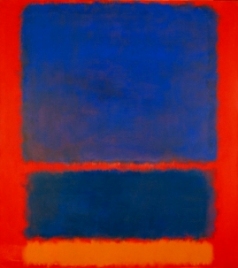
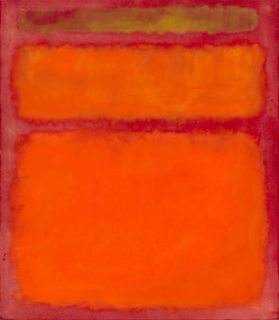


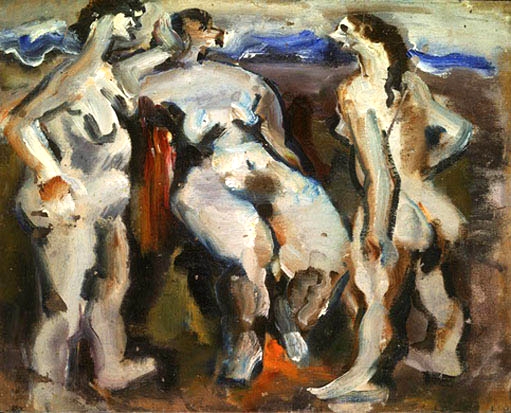
![Entrance to Subway [Subway Scene],1938](https://images.squarespace-cdn.com/content/v1/54326acbe4b0331aac16f283/1490711154470-YD6QXUJZQ79KCKM77JPP/Entrance+to+Subway+%5BSubway+Scene%5D%2C1938.jpg)
![Underground Fantasy [Subway], c. 1940,](https://images.squarespace-cdn.com/content/v1/54326acbe4b0331aac16f283/1490711204382-PD4FTYR9CA275XW93ABH/Underground+Fantasy+%5BSubway%5D%2C+c.+1940%2C.jpg)
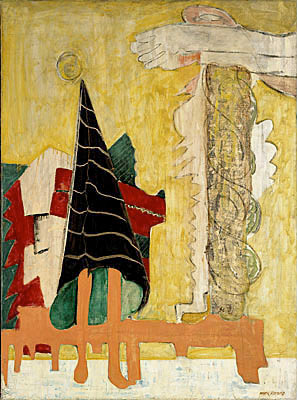


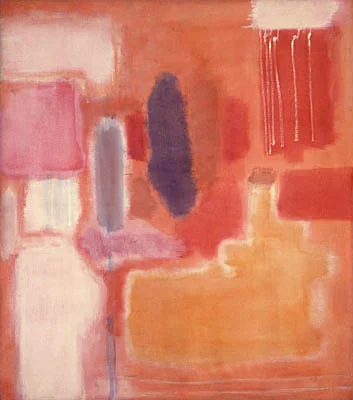


![Untitled [Multiform],1948.jpg](https://images.squarespace-cdn.com/content/v1/54326acbe4b0331aac16f283/1488464887255-H3PPPD4A41HMB9XXOA31/Untitled+%5BMultiform%5D%2C1948.jpg)



